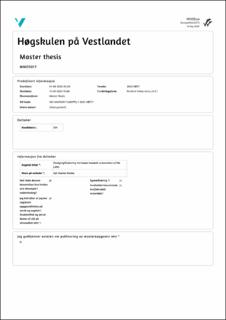| dc.description.abstract | Autonomous vessels and its subsea operations are not merely one of many sides of technological progress, but it will be also an innovation that disrupts and induces a paradigm shift in the ship industry as a whole.
Recently, advances in technology spanning digitalization, big data and Artificial Intelligence (AI) have reached a level where commercialization of autonomous ships are imminent, and the development of technology of these kinds of vessels and all around them has been progressing at a rapid pace.
In 2017, the International Maritime Organization (IMO) decided to adopt as one of its seven Strategic Directions to be pursued for the 2018-2023 timeframe, “Integrate new and advancing technologies in the regulatory framework” [1],[2].
In June 2018, it decided to embark on the Regulatory Scoping Exercise (RSE) to adopt and operate Maritime Autonomous Surface Ships (MASS) [1].
As a result, the global community has been called to make various efforts in technical and social aspects to accommodate autonomous vessels.
Concerning to the technical aspects of the LARS, there are some pre & post dive chekcs on th ROV nowadays which are mention in NORSOK (Norwegian shelf's competitive position) and IMCA (International Maritime Contractors Association) [3],[4].
This thesis will contribute in the exploration of what technical aspects, and social aspects in some way too, are needed to carry out the automated LARS of subsea vehicles. Described more specifically, the aim of this master thesis is to study and explore how could be possible to automate the LARS operation in moonpools.
The thesis has been conducted by literature studies and performing interviews to some crewmembers experienced in this operation in both, technical and practical aspects. The objective of getting an automated LARS is to decrease the risk of human life on board. Consequently, the economic and safety environment would be greatly favoured too, being that it would happen less accident due to it will be more safety to equipment and personal, and also, because the operation would be faster carried out.
Studying the way to convert the LARS in an automated operation, it has been considered that this will change the situation of operators.
At the end of the thesis there is a selection of subjects for future researchers. | en_US |

